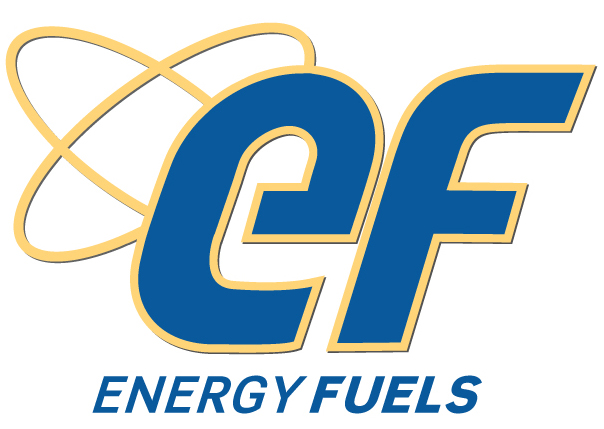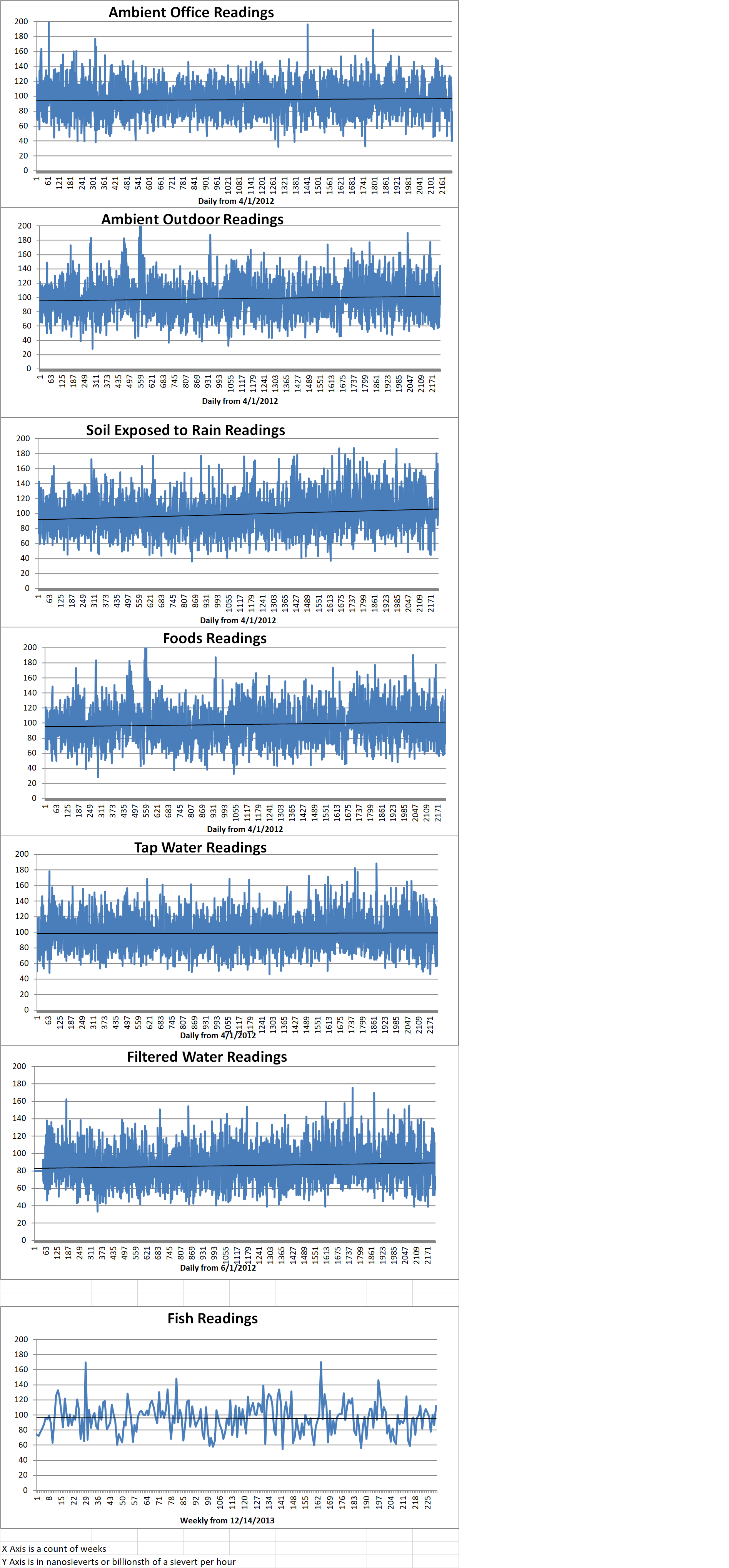Since President Trump started imposing tariffs on a variety of imports, other countries have reciprocated with tariffs on U.S. goods. Now the question has been raised of whether or not the U.S. needs to put tariffs on imported uranium destined to fuel U.S. commercial nuclear power reactors in the name of national security.
The U.S. Department of Commerce announced on Wednesday that it will investigate whether uranium imports are a threat to national security. U.S. mining companies Energy Fuels Inc. and Ur-Energy Inc. requested the investigation last January. These two companies are suggesting that it would be prudent for the U.S. to require that at least twenty-five percent of the domestic uranium market should be reserved for domestic producers. Currently, domestic companies only account for less than five percent of U.S. uranium consumption. It is estimated that it would take about three years for domestic uranium miners to increase their production to meet that twenty-five percent target.
The possibility of a trade war affecting the U.S. uranium market follows President Trump’s order last month to his Energy Secretary to provide funding to extend the life of uneconomical coal and nuclear power plants. These fossil and nuclear plants are suffering from the competition with cheap natural gas and renewable sources with steadily dropping costs. If tariffs are attached to imported uranium, then these nuclear power reactor operators will have even more difficulty competing in the U.S. energy market.
The director for fuel cycle programs at the Nuclear Energy Institute in Washington said, “The administration is searching for ways to help nuclear power plants that are financially struggling right now. We wouldn’t want to see counterproductive action to their stated goal of saving nuclear power.”
Uranium prices have fallen since the nuclear disaster at Fukushima, Japan in March of 2011. Japan shut down all of their reactors following the disaster and is only now beginning to turn some of the back on. Germany decided that it would abandon nuclear power and began closing nuclear power plants. In addition to the loss of these customers, there is also a global oversupply of uranium that caused Kazakhstan, the biggest uranium supplier in the world, to cut back production last year. Cameco Corporation, a Canadian company, is the biggest supplier of uranium in North America. Last November they also cut production.
Commercial nuclear power reactors supply about twenty percent of the electricity in the U.S. Uranium to fuel the reactors accounts for about twenty percent of the cost of operation. Most U.S. utilities that operate nuclear power plants have contracts for uranium fuel through 2021. It is not clear what effect new tariffs would have on these existing contracts.
A utility analyst at Bloomberg Intelligence said, “Clearly the purpose of a tariff is to raise the price. Ultimately, in most states, it would end up being borne by the end consumer.”
There have been reports that the price of uranium will inevitably rise as the prime deposits are depleted and more costly deposits will have to be mined. On the other hand, there is a new process for extracting uranium from sea water that the developers claim will soon be competitive with the cost of uranium mined and extracted from land-based sources. There are many uncertainties ahead for the uranium market.
Blog
-

Nuclear Reactors 595 – U.S. Is Considering Tariffs On Imported Uranium Reactor Fuel
-

Geiger Readings for Jul 23, 2018
Ambient office = 79 nanosieverts per hour
Ambient outside = 128 nanosieverts per hour
Soil exposed to rain water = 126 nanosieverts per hour
Strawberry pear from Central Market = 145 nanosieverts per hour
Tap water = 79 nanosieverts per hour
Filter water = 64 nanosieverts per hour
-

Geiger Readings for Jul 22, 2018
Ambient office = 104 nanosieverts per hour
Ambient outside = 105 nanosieverts per hour
Soil exposed to rain water = 104 nanosieverts per hour
Carrot from Central Market = 113 nanosieverts per hour
Tap water = 57 nanosieverts per hour
Filter water = 52 nanosieverts per hour
-

Geiger Readings for Jul 21, 2018
Ambient office = 104 nanosieverts per hour
Ambient outside = 105 nanosieverts per hour
Soil exposed to rain water = 104 nanosieverts per hour
Orange bell pepper from Central Market = 113 nanosieverts per hour
Tap water = 57 nanosieverts per hour
Filter water = 52 nanosieverts per hour
Dover sole – Caught in USA = 112 nanosieverts per hour
-

Nuclear Reactors 594 – Russian Kurchatov Institute Researching Extending Life Of VVER-440 Reactors
Many of the existing four hundred plus commercial nuclear power reactors in the world are reaching or have reached the end of their original forty-year licenses life span. Some of them are going to be shut down and others are applying for or have been granted extension of their legal life span. As reactors age, their concrete and steel deteriorate, and maintenance becomes more and more expensive. There is a lot of research around the world on the question of how to safely and economically extent reactor life spans.
Russia is aggressively pursuing nuclear technology for internal power generation and external exports not to mention for nuclear weapons development. Scientists from the R and students from the National Research Nuclear University are collaborating on research on new technology to extend the service life of their popular VVER-440 commercial power reactors by up to forty five years. They published their work in the Journal of Nuclear Materials.
The Russian VVER-440 is the most popular commercial nuclear power reactor in the world. The water-water energetic reactor vessel is one of the most import parts of a nuclear power plant. It could be said that the safety and operating efficiency of the reactor vessel virtually defines the level of safety at a nuclear power plant.
The components of an operating nuclear power plant are subjected to fast neutron exposure. This results in radiation hardening which is a loss of plasticity in the base metals in the components due to radiation-induced defects phase at the nanoscale.
The combination of radiation and temperatures of almost six hundred degrees Fahrenheit cause impurity elements to differentiate at the boundaries of the grains in the matrix of the metal alloy. This, in turn, results in reduced crack resistance in the component.
This reduction in crack resistance limits the safe lifespan of a reactor. The probability of a brittle fracture occurring when a reactor vessel is flooded by cold water in case there is an emergency where the core has to be quickly cooled. In 1991, Russian scientists carried out a “recovery annealing process” on some VVER-440 reactor vessels which extended their service life by up to forty-five years.
The recover annealing process was developed and patented at the Kurchatov Institute. It requires that a reactor vessel be heated to and baked at different temperatures in a series of phases. Samples are cut from the inner surface of a functional VVER-440 and subjected to comprehensive studies, re-annealing and then studying the samples.
A professor at MEPhI’s Institute of Nuclear Physics and Engineering said, “It is essential to conduct this procedure so we can give recommendations on further extending the service life of the reactor vessel and determine the rate of post-annealing radiation embrittlement.”
“Conducting re-annealing with this technology results in the dissolution of radiation-induced precipitation and defects as well as grain boundary segregations,” Kuleshova stated. “This leads to the restoration of the original properties and structures of the base metals, increasing their service life. That is why we need to know more about the structure and mechanical properties of the reactor vessel base metals at different stages in their lifespan, including after re-annealing.”
Researchers involved in this annealing program said that in order to extend service life by sixty years, there would need to be a second round of recovery annealing after carrying out preliminary studies on the structure and mechanical properties of the base metals in the reactor vessel. This would take place after an annealed reactor vessel had been in operation for a long time.
This research project required the use of modern high-resolution analytical techniques including transmission and raster electron microscopy, atom probe tomography and Auger electron spectroscopy. In order to ascertain the amount of radiation embrittlement in the metals, there were mechanical tests on static tension and impact bending.
“The participation of MEPhI students in this research showcases the connection Russian students have with real science and the economy, which allows them to work on scientific developments and solve large-scale problems while they are still studying at the university. This increases their knowledge and competence levels and benefits the country’s economy.” -

Geiger Readings for Jul 20, 2018
Ambient office = 104 nanosieverts per hour
Ambient outside = 105 nanosieverts per hour
Soil exposed to rain water = 104 nanosieverts per hour
Probleno pepper from Central Market = 113 nanosieverts per hour
Tap water = 57 nanosieverts per hour
Filter water = 52 nanosieverts per hour
